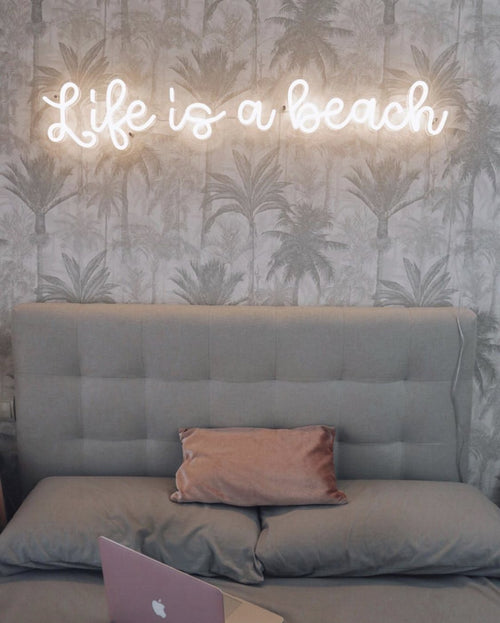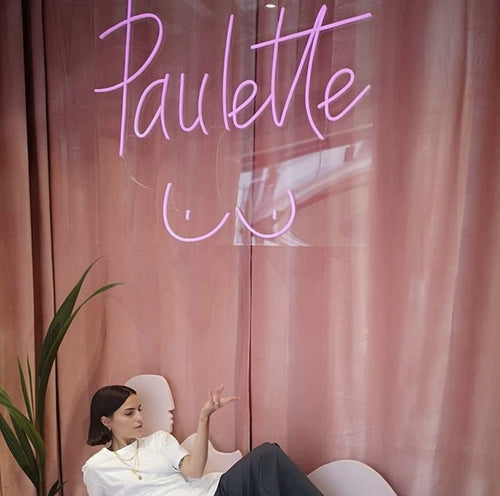Custom neon light signs serve as vibrant statements, infusing spaces with personality and character. They are not just functional light sources but also powerful tools for branding and personal expression. Whether for a cozy café, a trendy boutique, or a personal bedroom, these signs can transform an ordinary space into something extraordinary.
Understanding Neon Signage
Neon signs are made by bending glass tubes into shapes and filling them with gas, usually neon or argon, which glows when an electrical current is applied. However, modern technology has introduced LED neon lights, which mimic the appearance of traditional neon while being more energy-efficient and versatile. When creating custom neon signs, it’s essential to consider the following elements:
-
Design and Aesthetics:
- Shape and Size: The design should reflect the intended message or theme. Consider the dimensions that will fit the space where the sign will be placed. Larger signs make a bolder statement, while smaller ones can be more subtle.
- Font and Color: Choosing the right font is crucial for legibility and style. Script fonts convey elegance, while bold, block letters can evoke a more modern feel. Color selection is also vital, as different hues evoke different emotions; for example, blue is calming, while red can be energizing.
-
Material Selection:
- Traditional vs. LED Neon: While traditional neon is known for its authentic glow, LED neon is more popular for custom signs today due to its durability, lower heat emission, and energy efficiency. Understanding the materials used will impact the sign's longevity and visual appeal.
-
Power Source and Placement:
- Electrical Considerations: Custom neon light signs require an appropriate power source. This includes understanding voltage requirements and ensuring that installation is safe and compliant with local regulations.
- Placement and Visibility: The location of the sign should maximize visibility. Consider factors such as lighting conditions and surrounding decor. A well-placed sign can draw attention and enhance the overall ambiance.
The Custom Design Process

Creating a custom neon sign involves several steps, each requiring careful thought and consideration:
-
Concept Development:
- Start with brainstorming ideas. This could involve sketching potential designs or using digital design software. Collaborate with clients to understand their vision and preferences.
-
Prototyping:
- Develop prototypes to visualize the design in a three-dimensional space. This can include creating a small-scale model or using software to simulate how the final product will look.
-
Feedback and Revision:
- Share prototypes with clients to gather feedback. This stage is crucial for making necessary adjustments to ensure the final product aligns with the client’s vision.
-
Production:
- Once the design is finalized, production begins. This involves bending glass tubes (for traditional neon) or assembling LED components. Each step requires skill and precision to ensure quality and safety.
-
Installation:
- Proper installation is vital for the functionality and safety of the sign. Ensure that all electrical connections are secure and that the sign is mounted in a way that enhances its visibility and aesthetics.
Applications of Custom Neon Signs
Custom neon light signs find use in a variety of settings:
-
Businesses:
- Retail stores, restaurants, and bars often use neon signs to attract customers. A well-designed sign can become a landmark, helping to build brand recognition.
-
Events:
- Neon signs are popular for weddings, parties, and corporate events. They can display the couple’s names, event hashtags, or themed designs that add a unique touch to the celebration.
-
Home Decor:
- In residential settings, neon signs can personalize spaces. Whether it’s a sign with a favorite quote or a representation of a hobby, these signs can make a house feel like a home.
The Benefits of Custom Neon Signs
Investing in custom neon light signs offers numerous benefits, including:
-
Branding:
- Custom neon light signs are effective branding tools. They create memorable impressions and reinforce brand identity through consistent use of color, font, and messaging.
-
Energy Efficiency:
- LED neon signs are significantly more energy-efficient than traditional neon. They consume less power and have a longer lifespan, making them a cost-effective choice in the long run.
-
Durability:
- Modern materials used in neon sign production ensure durability and resistance to damage. This is particularly important for outdoor signs exposed to the elements.
-
Easy Maintenance:
- Maintenance for LED neon signs is generally straightforward, often requiring only occasional cleaning. Replacement parts are readily available, ensuring that signs can remain operational for years.
-
Versatility:
- Custom neon signs can be designed for any occasion or setting. Their versatility makes them suitable for a wide range of styles, from vintage to modern, ensuring that there is an option for every aesthetic.
Conclusion
Custom neon light signs are more than just decorative items; they are expressions of creativity, personality, and branding. When creating these signs, careful consideration of design, materials, and functionality can lead to stunning results that enhance any environment. Their applications range widely, serving businesses, events, and homes, while their benefits, such as energy efficiency and durability, make them a smart choice for many.




